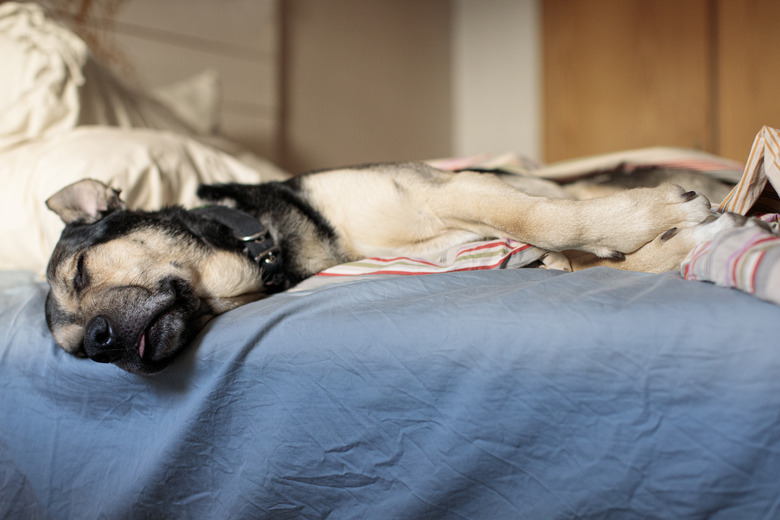Do Dogs' Sleeping Positions Really Mean Anything?
Imagine waking up naturally, no alarm in sight, having yourself a nice stretch, maybe getting up for a quick drink of water and a bathroom break, then curling right back into bed where you'll stay for as little or as long as you wish. This might sound like a dream vacation, or a typical weekend for some people, but for many dogs, this is daily life. The average dog spends about half of their life sleeping, and during those essential hours of slumber, they find themselves in a variety of positions. But, do those shapes reveal anything about our dogs?
Common dog sleeping positions
Common dog sleeping positions
One of the most common sleeping positions for dogs is the donut shape, which is when a dog is curled up into a tight little ball, often with their heads and tails tucked up under their bodies. Sleeping with all four legs sprawled out in front of and behind is another way dogs might commonly contort their bodies while they rest, as is sleeping on their side with their legs pointing straight out. Finally, a sometimes seen and always adorable position some dogs sleep in is on their backs with their bits just right out in the open for the entire world to see.
While the exact meanings of sleeping positions are hard to prove thanks to a lack of research on the matter, certain shapes can tell you a lot about a dog's comfort levels, security, and in some cases, natural behaviors.
What do they mean?
What do they mean?
When you see a dog curled up in a tight ball during slumber you can thank its canine ancestors. Sleeping curled tight is an instinct in dogs, and is done for a few important reasons, including conserving body heat, which wild dogs might have to do when sleeping in dens during the cooler months. Additionally, keeping a tight coil helps to protect vital organs for a dog, and protects their bellies in the event of a sudden attack in the night while they're enjoying a deep sleep. While this is likely not much of a threat for domesticated, indoor dogs, this behavior has helped to keep wild dogs alive and well for centuries, and is a behavior that's not so easy to shake. Much the opposite, a flying position, in which a dog's legs are extended in back and front, is often done in an attempt to cool off and might be seen on cool surfaces, like the floor of a garage or bathroom tile.
Sleeping positions can also indicate whether a dog is in a deep sleep state, or is just enjoying a bit of rest and relaxation. A dog sleeping on her side usually signifies a deeper sleep, and the relaxation that occurs in such a state will cause the muscles to naturally relax. This can lead to a dog's legs becoming extended. A "lion pose," which is when a dog is on her belly, front legs extended with her head resting on her legs, is usually something you'd see when a dog is just resting for a bit, or possibly in the early stages of dozing off. In this position, a dog is still alert enough to spring into action should something wake her up.
When to be concerned
When to be concerned
There isn't really one sleeping position that might signify if your dog is sick, uncomfortable, or in physical pain, but there are some common changes to a dog's sleeping habits that may be a signal that something is wrong. Sometimes, older or arthritic dogs may adjust themselves several times while sleeping, which can indicate discomfort. Arthritis can be better managed with the help of a veterinarian, who can help you decide if joint supplements or even pain medication is right for your dog, as well as a supportive dog bed, which can take some pressure off of aching joints.
In summary
In summary
There isn't any real concrete evidence that can point toward what exactly a certain sleeping position means for dogs, but some stances can tell you how restful a dog is. Curled tight or sleeping on the side are indicators that your dog is set to snooze for a good bit, while a lion pose or belly-against-the-floor position is usually what you'll see when a dog just drifts off. If you notice changes to your dog's sleeping habits, like constant readjusting, inability to snooze, or more sleeping than usual, for example, consult your veterinarian — many of these changes occur naturally later in life, but could be a sign of an underlying disorder.



